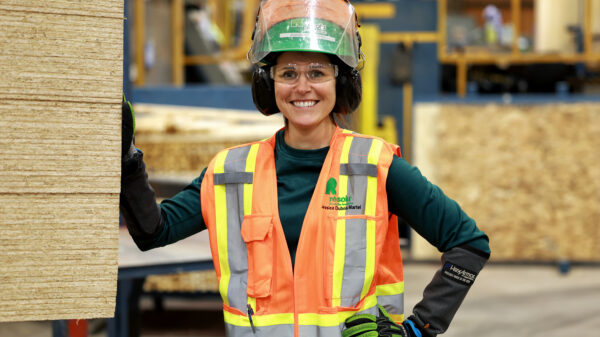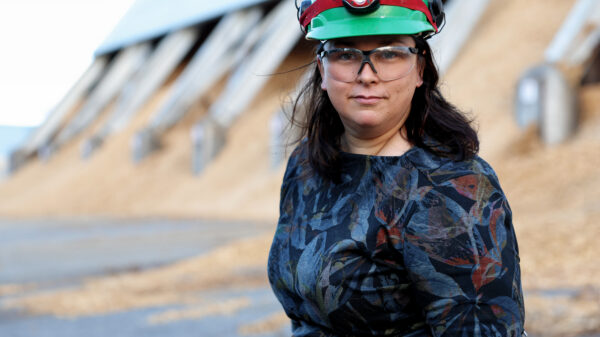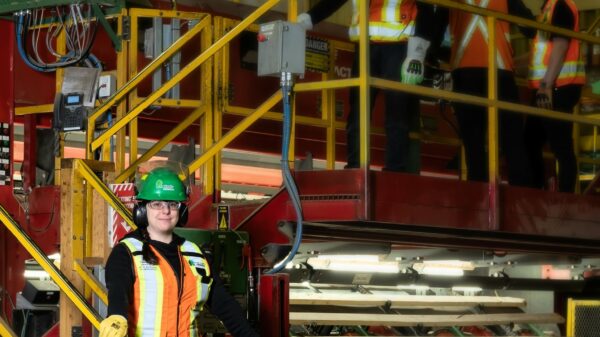This week is National Forest Week, an opportunity for Canadians to learn more about Canada’s forest heritage and to raise awareness about this valuable and renewable resource. Forests are fundamental to our economy, culture, traditions and history – and to our future. Communities, families and individuals depend on forests for their livelihood and way of life.
The answers to many frequently asked forestry questions can be found in the State of Canada’s Forests (SOCF) report, a comprehensive document published annually by the Canadian government. This year’s report is packed with facts confirming Canada’s leadership when it comes to forest sustainability. Take a look!
Q: How much of each tree harvested can actually be used?
A: All of it!
The SOCF 2019 report explains that “Canadian forest sector companies strive to find a use for every part of the tree, and in doing so, help to grow Canada’s bioeconomy”.
The forest products industry is highly efficient, continuously seeking ways to minimize waste and exploring innovative uses for the by-products of lumber production. Harvested trees are used first for manufacturing wood products such as lumber for construction and home renovation, and other products are made with the rest of the tree. Wood chips and other residues become pulp and paper, and bark and sawdust are used to generate renewable energy.
Q: How do forest products fit into a low-carbon future?
A: The forest products sector is leading the way in six key areas:
- Limiting the risk and impact of fire and disease by harvesting more vulnerable mature forests;
- Capturing carbon as forests rapidly regenerate and grow;
- Storing carbon long-term in wood products;
- Reducing the use of carbon-intensive building materials like concrete and steel;
- Displacing fossil fuels; and
- Substantially reducing greenhouse gas emissions from our operations.
Once again, the SOCF annual report confirms the essential role of Canadian forest products in tackling climate change.
It starts with a sustainable forest management system, cited by scientists and the U.N. Intergovernmental Panel on Climate Change as instrumental in combating climate change. As trees age, they’re increasingly vulnerable to forest fires and insect outbreaks, which generate tremendous levels of carbon emissions. But when we harvest those mature trees, we greatly reduce the risk of fires and outbreaks, and limit the impact of these disturbances if they do occur by salvaging the trees that can be used. The carbon that would have entered the atmosphere at the end of the trees’ lives is instead captured in long-lived forest products like lumber or books. Then, as the forest regenerates (as ensured by law), the rapidly growing trees capture even more carbon.
Another crucial way forest products contribute to a low-carbon future is by reducing the use of fossil fuels and other non-renewable materials like concrete and steel. The forest products sector uses cutting-edge science to bring innovative wood-derived materials to market, as Resolute demonstrates through these examples:
- At our Kénogami (Quebec) paper mill, Resolute is building a cellulose filaments commercial plant, a renewable biomaterial. Cellulose filaments can be added to products used in the transportation, construction and energy sectors, among others; increasing their resistance and durability while reducing their carbon footprint.
- Our wood pellet plant in Thunder Bay (Ontario) converts sawdust, a byproduct of our adjacent sawmill, into wood pellets, a reliable source of renewable energy.
- Also in Thunder Bay, Resolute joined forces with FPInnovations to build a biorefinery plant adjacent to our pulp and paper mill. The plant will produce lignin and sugars for the development of innovative bioproducts such as wood adhesives, animal feed and composites.
Beyond harvesting sustainably and displacing carbon-intensive materials, Canada’s forest products industry has dramatically decreased its greenhouse gas emissions in recent years, largely by generating its own bioenergy and improving energy efficiency. Since 2000, Resolute has reduced direct and indirect greenhouse gas emissions by 82%, making us a global industry leader. As well, 74% of the energy required by our operations comes from renewable sources.
From the SOCF 2019 report: “With the combination of long-lived and innovative wood products and forest management activities, Canada’s forest sector has the potential to reduce CO2 emissions by 50 million tonnes (mt) annually by 2050.”
Q: How much of Canada’s forests are harvested each year?
A: Less than 0.5%.
It’s true – less than 0.5% of Canada’s forests are harvested each year, while fire and insects impact 26 times that amount of forest. Harvest levels are closely monitored and controlled, ensuring long-term sustainability. We can be proud of our vast, thriving forestlands!
Q: How much deforestation is happening in Canada?
A: Virtually none.
Canada’s overall annual deforestation rate is only 0.01% – and that rate is expected to continue declining. The top three causes of deforestation in Canada are resource extraction (mining, oil and gas) (37%); agriculture (35%); and urban expansion (18%). Forestry accounts for just 4% of the 0.01% deforestation rate.
The term ‘deforestation’ is sometimes misunderstood. The term refers to the permanent clearing of forests to make way for new, non-forest land uses. Areas where harvesting or fire have occurred cannot be said to be ‘deforested’, because they regenerate into a new forest.
Q: How strict are Canada’s forestry laws?
A: Very – and they are enforced.
Over 90% of Canada’s forests are on public lands, and that’s where most commercial harvesting takes place. Harvesting is strictly regulated to keep forests healthy and provide a sustainable wood supply – not to mention the countless ways forests benefit communities.
Indeed, Canada’s boreal forest is one of the best-managed forests on earth, but you don’t have to take our word for it! The U.N. Food and Agriculture Organization confirms that the boreal is thriving, and a NEPCon report found that Canada’s forest management policies are among the most stringent in the world.
Harvesting is carried out per detailed forest management plans, developed with input from First Nations, government agencies, the public and other stakeholders.
By law, all harvested areas are promptly regenerated. As explained in the SOCF 2019 report, “This law is the reason that a disproportionally high percentage of the world’s certified sustainably managed forests are in Canada. Indeed, although Canada is home to 9% of the world’s forest, it is also home to 36% of the world’s certified sustainably managed forests”. Every hectare of the forests Resolute manages is certified to at least one of two internationally recognized forest management standards: the Sustainable Forestry Initiative® (SFI®) standard and the Forest Stewardship Council® (FSC®) standard.
Q: How does forestry benefit communities?
A: Forestry sustains over 300,000 Canadians and their families.
In 2018, the forest products sector employed 210,615 Canadians, including some 11,600 Indigenous people. Another 91,874 work in fields adjacent to forestry. The industry offers well-paying careers for foresters, scientists, engineers, computer technologists, technicians, skilled tradespeople and more. Some 300 communities across Canada, representing 2% of the country’s population, depend on forestry for a large share of their jobs and income. Resolute has built partnerships with nearly 40 First Nations communities across Quebec and Ontario, creating mutually beneficially opportunities and shared prosperity.







